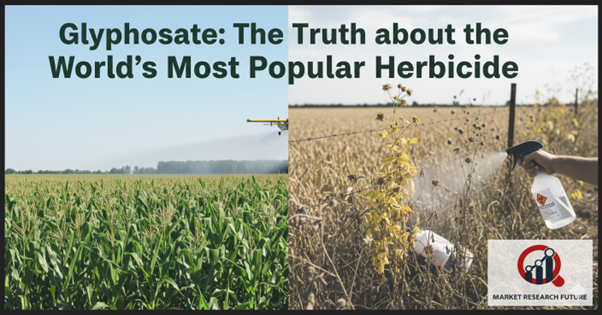Here's what you need to know about Glyphosate

Glyphosate: The Truth about the World's Most Popular Herbicide
Introduction: The Chemical That Made Farming Today
Glyphosate is one of the chemicals that people talk about and argue about the most in farming. It was once praised as a revolutionary weed killer that changed farming around the world, but now people are worried about its effects on the environment and health. Glyphosate is found in many fields, gardens, and even cities. It continues to be a topic of debate about safety, sustainability, and the future of food production.
This article goes into more detail about what glyphosate is, why it became so popular, and how its use is being looked at again in 2025.
What Glyphosate Is and How It Helps Control Weeds
Monsanto introduced glyphosate in the early 1970s as a strong way to deal with one of farming's biggest problems: managing weeds. It is a non-selective herbicide, which means it kills almost any plant it touches. This makes it a useful tool for getting rid of weeds before planting or keeping unwanted plants away from crops.
The way it works is by stopping the shikimate pathway, which is a key process that plants use to make important amino acids. Glyphosate was first thought to be safe to use because animals and people don't need this pathway. However, as research has progressed, scientists have started to look into how it affects soil microbes, biodiversity, and gut health indirectly, which suggests that its effects may go beyond just plants.
Glyphosate is used for more than just farming; it is also used to control weeds in cities, keeping parks, roadsides, and other public spaces clean. Some farmers use it as a drying agent, or desiccant, to make it easier to pick crops. Even though it's useful, the fact that so many people use it has raised ethical and environmental questions that still affect how people see it.
What do Roundup and Glyphosate have in common?
Roundup, a brand name for glyphosate, became known around the world as a good way to kill weeds. Monsanto, the company that made both products, later made genetically modified (GMO) crops that are resistant to glyphosate. This lets farmers spray whole fields without hurting their crops. This new idea made crops more productive, but it also led to a lot of glyphosate being used around the world.
This raised worries about soil degradation, weeds that are resistant to herbicides, and possible health risks from being exposed to them for a long time. Because of this, Roundup and similar products are getting more and more attention, which has led to new talks about rules and bans in some areas.
The Increasing Argument about Safety and Environmental Impact
Today, the discussion about glyphosate isn't just between farmers and scientists; it also includes policymakers, environmentalists, and consumers. Some studies show that glyphosate residues can stay in soil and water systems for a long time, which could harm aquatic life and the long-term fertility of the soil.
Experts in health are still looking into whether being around glyphosate could cause long-term health problems. Even though different global regulatory bodies have come to different conclusions, ongoing research has made people want organic and glyphosate-free products even more. Because of this change, the agriculture industry is looking into other ways to control weeds, such as biological herbicides, crop rotation, and precision farming technologies.
Is There Life After Glyphosate?
As we get further into the decade, the argument is less about whether glyphosate works and more about whether it should still be used in the same way. A lot of countries are making their rules stricter to get farmers to use more environmentally friendly farming methods that don't rely as much on chemical herbicides.
Gradually, new ideas like AI-driven crop monitoring, robotic weeding, and eco-friendly herbicides are becoming more and more possible. At the same time, consumer awareness is changing the way farming is done, pushing brands and producers toward cleaner, more open systems.
Conclusion: Finding a Balance between Progress and Safety
Glyphosate's rise from a groundbreaking invention to a global focus shows how agricultural innovation needs to keep up with scientific progress. Even though it is still an important tool for many farmers, the demand for safer, more sustainable methods is stronger than ever.
In 2025, the focus will be on finding a balance between keeping farming productive and protecting the environment and public safety. In the years to come, it will depend on how science, regulation, and innovation continue to develop whether glyphosate stays a key part of that balance or slowly fades away.

Leave a Comment